My In-Laws Begged Me to Get Back to Their Son, but I Told Them the Embarrassing Truth About Him

The good old Solar System is actually a pretty bizarre place, what with all its out-of-this-world phenomena that we, humans, haven’t managed to explain so far! There are rumors that a gigantic, undiscovered planet is hiding behind Neptune, volcanoes on Pluto spew ice, and a colossal canyon on Mars can accommodate the whole US territory!
Well, let’s figure out if it’s true by talking about the most mystifying Solar System facts. The Solar System is 4.6 billion years old! So old — it’s a senior Solar System. Scientists came to this conclusion after they studied the oldest material they managed to get a hold of — and by that, I mean meteorites, of course.
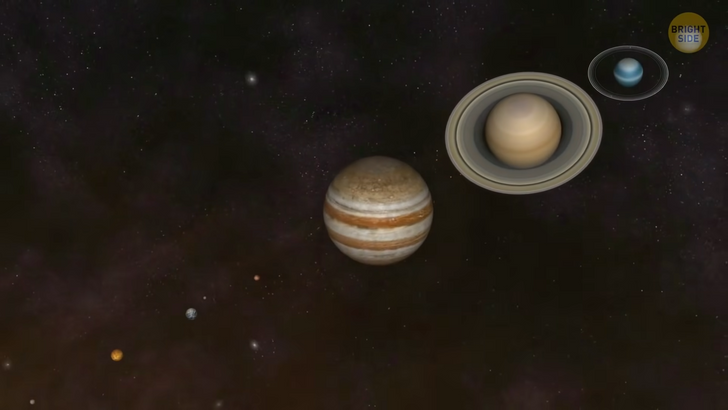
You won’t be able to wear a hat on Venus. Ever. The planet is insanely windy — its upper winds blow 50 times faster than the planet rotates. What’s more, these fierce winds never stop and can even get stronger with time! Wanna get away? You’ll have to travel a whopping 11[.0] billion miles [17.7 billion km] away from Earth before leaving the Solar System. Take your Google Maps with you!
You’ve probably heard of the methane gas, a byproduct of natural processes, such as volcanic activity? Anyway, this gas is not only a part of the Martian atmosphere but also the thing that confuses astronomers to no end! The thing is that the volume of methane on Mars keeps wavering, and scientists just can’t figure out where it might be coming from! Can there be life on Mars?
As you may remember, Pluto used to be a planet but was stripped of this title in 2006. Later, it was reclassified as a dwarf planet. But the most unexpected fact about this celestial body is that its diameter is smaller than that of the US!
See for yourself: the greatest distance across the country (from Maine to Northern Carolina) is about 2,700 miles [4,344 km]. As for Pluto, it’s only 1,473 miles across. [2,370 km] The planet Uranus rotates on its side, and astronomers have no idea how come the planet has chosen such an unusual position. The culprits could be ancient mega-powerful collisions, but so far, it’s just a theory. By the way, Uranus is the only planet sitting on its side.
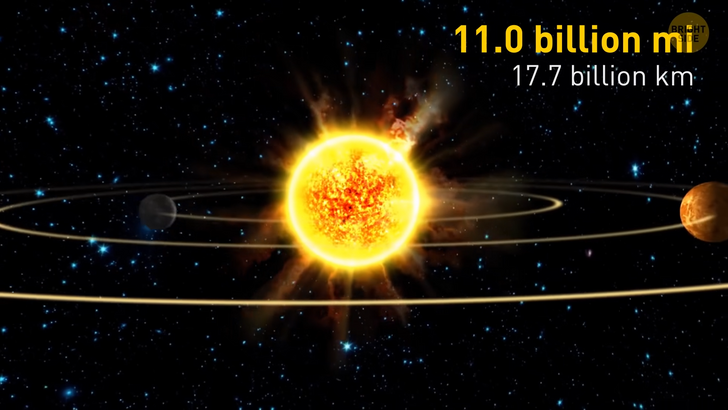
Our Sun is insanely massive! Wanna some proof? Well, 99.86% of all the mass of the Solar System is in the mass of the Sun — in particular, hydrogen and helium it’s made of. The remaining 0.14% is mostly the mass of the Solar System’s eight planets. Earth might not be the only tectonically active planet in the Solar System. Astronomers have spotted some landforms looking like cliffs on Mercury! If it’s so, the tectonic activity could explain the rapid shrinking of the planet.
In most sci-fi movies about space, the main character gets into an asteroid belt and has to try hard to get away from countless rocks that threaten to damage their spacecraft. Sorry to disappoint, but that’s nothing like the real thing. The only asteroid belt astronomers know about is located between Mars and Jupiter. There are thousands of asteroids in this region, but they’re so widely spaced that a chance of collision is next to nothing.
Behind the orbit of Neptune, there lies a mysterious Kuiper Belt, filled with massive icy objects. The most curious thing about this space formation though is that scientists can’t to explain the pattern of its movement. The only explanation they have is that Neptune might be hiding from our sight a ginormous planet. This hypothetical planet has already got the name Planet Nine, and all we have to do is wait until its existence is confirmed. Or not.
Volcanoes on Earth are as different from those on Pluto like fire and ice. And I mean it! While we have lava spilling volcanoes on our planet, volcanoes on Pluto spit... ice! When frozen, water expands, and this enormous pressure builds up until one day — bang! — the ice erupts. In the process, a new cryovolcano gets formed.
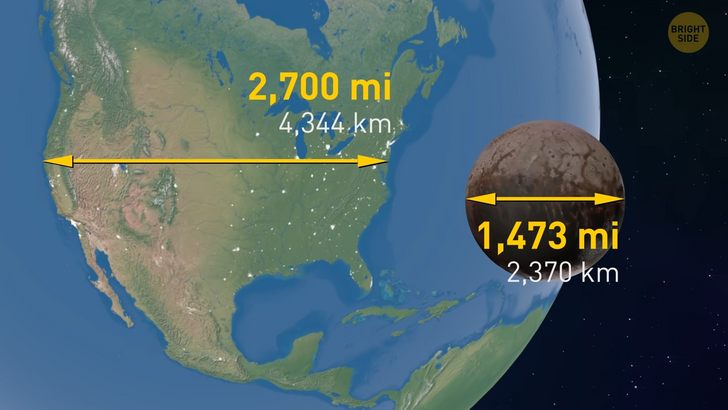
One of Saturn’s moons, Lapetus, has a unique coloring — it’s two-toned. One of its hemispheres is light, and the other is eerily dark. Scientists haven’t figured out this mystery yet. There is another weird thing about Pluto, or rather, about its atmosphere. First, it rises way higher above the surface of the dwarf planet than, for example, the Earth’s atmosphere. What’s more, the atmosphere on Pluto has more than 20 layers, and all of them are super cold and very condensed.
We live inside the Sun. Not, I don’t mean that we’re the inhabitants of the red-hot ball of light approximately 93[.0] million miles away! [150 million km] The thing is that the Sun’s atmosphere stretches far beyond its visible surface. And our planet is right within its reach. In fact, exactly the gusts of solar winds create such a breathtaking phenomenon as the Northern and Southern lights.
The ocean on Jupiter is larger than any other on the rest of the Solar System’s planets. But wait! It’s not the ocean you think about. The one on Jupiter isn’t made of water. This mesmerizing thing consists of metallic hydrogen, and its depth is a staggering 25,000 miles, [40,225 km] which is actually almost the same as the circumference of Earth!
The Sun’s atmosphere is hotter than the surface of the star. While on the surface, the temperatures reach 10,000 degrees [°F] [5,538 °C], the upper atmosphere [1,000,000 °F] [555,538 °C] heats up to millions of degrees! Scientists suspect that explosive bursts of heat from the Sun might have something to do with this unique phenomenon.
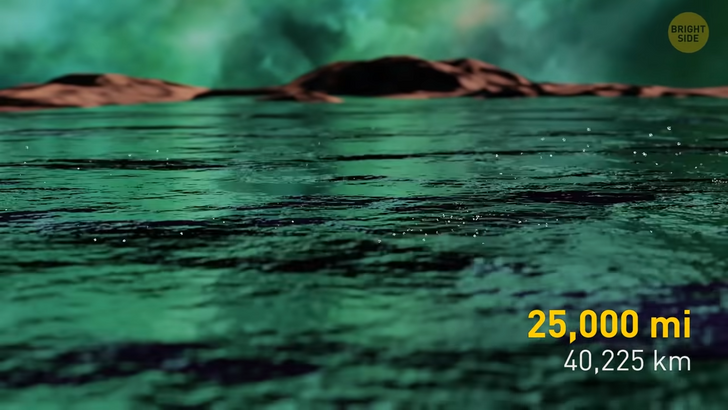
People got to know about beautiful Saturn’s rings in the 1600s. But only recently, it became apparent that Saturn isn’t the only ringed planet. All the giant gas planets, Uranus, Neptune, and Jupiter, have rings of their own, but they are thin and almost impossible to see. As for Mars, Venus, and Earth, they are made of rocky materials and have no rings whatsoever.
Our Solar System isn’t the only one in the Milky Way Galaxy. Far from it, the galaxy we live in houses about 100 billion solar systems! And if it’s just our galaxy alone, what can we say about the whole Universe?
At any given moment, here, on Earth, you can stumble across a rock that’s arrived from Mars. After scientists analyzed the chemical content of some meteorites found in the Sahara Desert, Antarctica, and other places on our planet, [Mars] they came to a shocking conclusion that they have Martian origin. Since Mercury is the closest planet to the Sun, many people simply assume that it’s also the hottest. And that’s where they get it wrong because, in fact, Venus (which is about 30[.0] million miles [48.3 million km] further from the Sun than Mercury) is way hotter!
The thing is that Venus has an incredibly thick atmosphere, which is 100 times denser than the one we have on Earth! On top of that, this atmosphere consists almost entirely of carbon dioxide, also known as a greenhouse gas. These factors make the temperatures on the planet rise up to a staggering 875 degrees [°]F [468 °C], which is hot enough to melt lead. As for Mercury, its maximum temperatures reach only 800 degrees [°]F [427 °C].
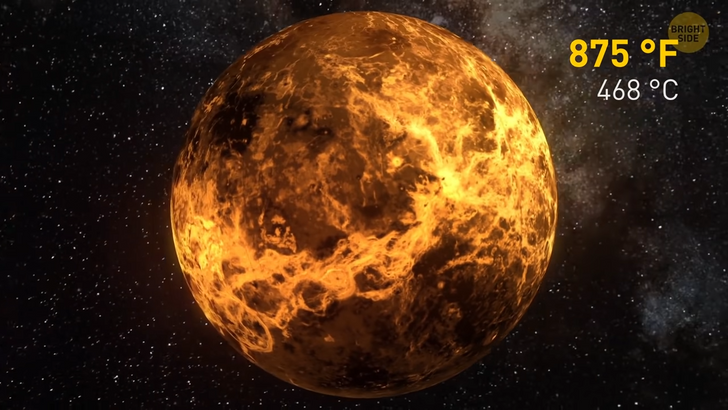
Jupiter’s moon Io exists in no-ending chaos due to hundreds of smoking volcanoes on its surface. If you ever visit this place, you’ll see the smoke from these volcanoes billowing up high into Io’s atmosphere. The most enormous volcano in the whole Solar System (at least, that we know of) is on Mars! The size of this monster is almost as great as the state of Arizona, and its height is as big as that of Mount Everest! How come this thing grew that huge?
The answer is pretty simple — there is much lower gravity on Mars in comparison with our planet. Even if you’re a tiny celestial body, you can still have a moon of your own. In 1993, the Galileo probe was traveling past a miniature asteroid that was no more than 20 miles [32.2 km] across and discovered that the little thing had a 1-mile-wide moon [1.0 mi] [1.6 km]. Since then, astronomers have found tons of moons orbiting minor planets of our Solar System.
The valley called Valles Marineris on Mars is more than 10 times larger than Earth’s Grand Canyon. And it’s another thing that puzzles astronomers — after all, Mars isn’t a planet with active plate tectonics! On the surface of Jupiter, there is a weird region that’s called the Great Red Spot.
Recently, astronomers have concluded that this spot is actually a storm that has been raging on the planet for centuries. But some 20 years ago, scientists noticed that the red region started to shrink. Nowadays, it’s just half the size it used to be. And still, the spot is one and a half times bigger than Earth.
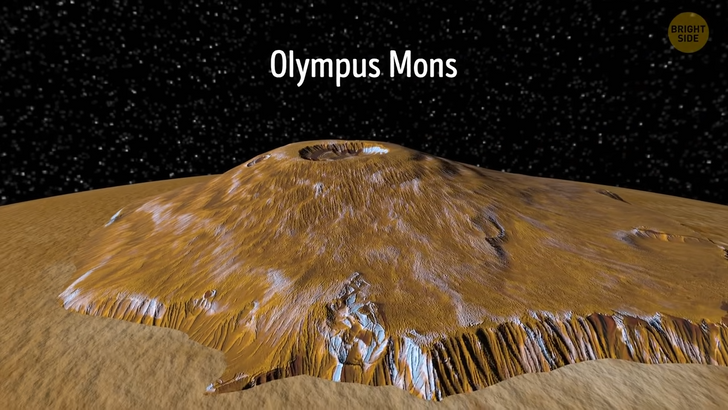
Do you know any other unusual facts about our Solar System that I’ve missed? Then let me know down in the comments! If you learned something new today, then give this video a like and share it with a friend.
But — hey! — don’t go anywhere just yet! We have over 2,000 cool videos for you to check out. All you have to do is pick the left or right video, click on it, and enjoy! Stay on the Bright Side of life!











